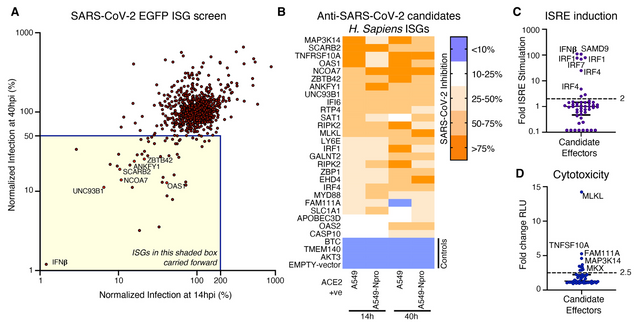
The human cell-mediated immune system has many pathways for fighting off viral infection. One of them is the OAS1 pathway.
OAS1 is a gene that encodes an enzyme whose function is to sense the presence of viral RNA then activate a particular ribonuclease (RNase L) that tears apart RNA viruses (such as SARS-CoV-2). That sequence looks like this:
(1) The presence of interferon (INF1) causes OAS1 to be expressed (i.e, translated into a protein)
(2) The OAS1 enzyme senses (or fails to sense) the presence of SARS-CoV-2 RNA
(3) If SARS-CoV-2 RNA is sensed, the OAS1 enzyme activates a particular ribonuclease
(3) That now activated ribonuclease (RNase L) fights off SARS-CoV-2 by cutting the viral RNA into fragments
What controls whether the OAS1 protein can sense SARS-CoV-2 RNA? It appears to depend on whether a particular hydrophobic sequence of amino acids is attached to the C-end (proteins have a C-end and an N-end) of the protein. What controls whether that particular sequence of amino acids is present?
There is evidence that whether or not OAS1 can sense SARS-CoV-2 may come down to variations in a single nucleotide in a single gene. (i.e., an SNP, or "Single Nucleotide Polymorphism")
I'm writing this in a bit of a hurry before dinner and I still need to finish understanding this paper, but if this is true, we've just taken a giant step towards understanding why some people are so susceptible to COVID-19, while others are not. If it's true... we'll be able to predict who's most susceptible.
Published a few days ago in Science: https://www.science.org/doi/10.1126/science.abj3624